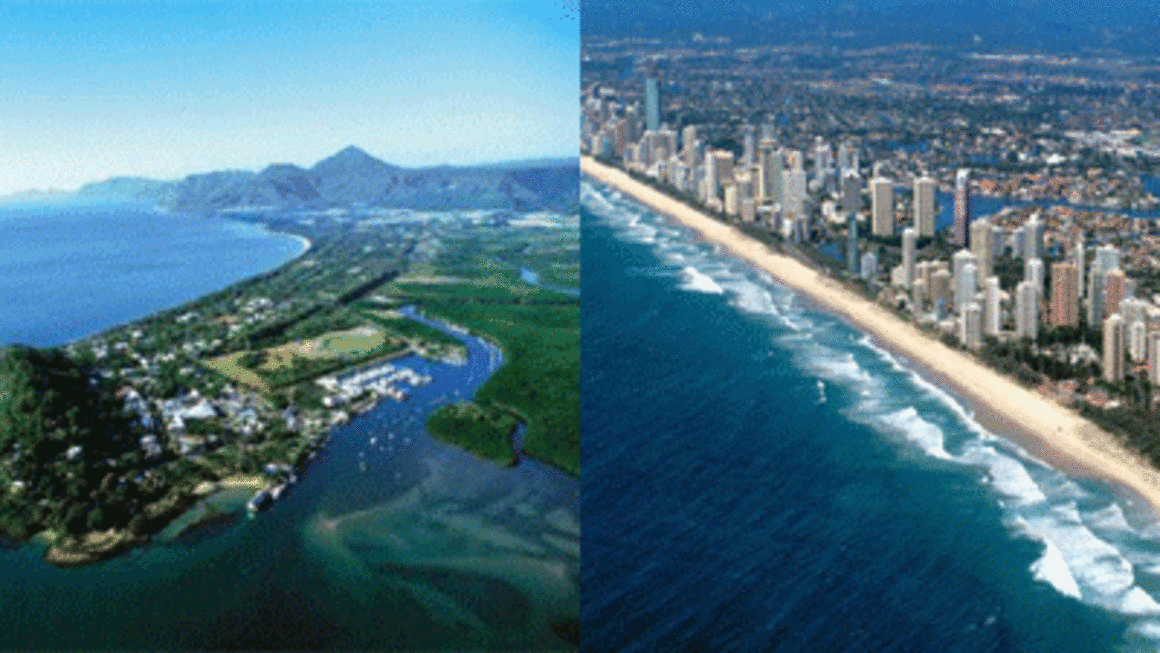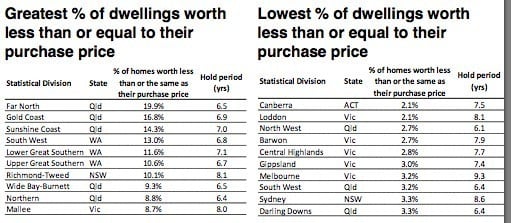Queensland’s tropical Far North and Gold Coast housing markets worst at accumulating value: RP Data

The extent of the decline of property values in places like Port Douglas, Cairns and the Gold Coast, where close to one in five properties have lost up to 10% of their value since being purchased, has been revealed in the latest RP Data Value Accumulation Report for the March quarter.
Previously called the Equity Report, it shows that nationally, the housing market remains a solid medium- and long-term investment, with only 5.4% of Australian homes currently valued at either less or the same amount as what they were purchased for – an improvement from 6.1% of homes recorded at the end of the December 2011 quarter.
Conversely, more than 41% of Australian homes are worth more than twice what their owners originally purchased them for.
However, the report reveals the struggles facing Queensland regional and coastal areas not feeling the benefits of the resources boom.
According to RP Data, nearly one in five homes (19.9%) in tropical Far North Queensland are now worth less than or the same as their previous purchase price – nearly four times higher than the national rate.
This region includes heavily tourism-dependent places like Cairns and Port Douglas on the coast and inland, the Atherton Tablelands, which have been hit by the high Australian dollar and a spate of natural disasters.
The struggling Gold Coast market is second on the list (16.8% of homes not appreciating in value) followed by the state’s other struggling coastal market, the Sunshine Coast (14.3% of homes).
The Gold Coast and Far North also have the lowest proportion of properties worth double the initial purchase price at just 30.3% of all homes.

Over the March quarter, the report found that the instances of negative value accumulation or stability has fallen in most regions of Queensland, but the greatest declines had been recorded in West Moreton (-2.7 percentage points), Far North (-2.0 percentage points) and Gold Coast (-1.9 percentage points).
The list of those regions that have recorded the greatest percentage of dwellings worth less than or equal to their purchase price also includes lifestyle markets in Western Australia, Richmond-Tweed in New South Wales and Wide Bay-Burnett in Queensland.
RP Data research analyst Cameron Kusher says this is reflective of the weaker market conditions across many lifestyle regions.
In contrast, Victoria and Melbourne, have had the greatest level of value accumulation of any state or capital city.
This has been helped by the fact that Victorian and Melbourne properties tend to be owned for a longer length of time than homes in other parts of the country – 9.3 years in Melbourne, the highest hold period across Victoria.
In contrast, Queensland and South Australia, properties tend to have a higher turnover and subsequently, value accumulation in these states has generally been lower than in other states.
The report found that just 3.3% of Victorian homes and 3.5% of Melbourne homes are valued at the same or less than their purchase prices - better than NSW (3.9%) and Sydney (3.6%), the next best performing state and capital city markets.
This is up though from 2.8% of Sydney homes worth less than or equal to their initial purchase price recording at the same time last year - highlighting the impact on value accumulation that the fall in home values has had over the past year.
Victoria (50.3%) and Melbourne (51.6%) also have the highest proportion of homes that have doubled in value since being purchased, significantly higher than NSW (37.8%) and Sydney (37.2%).
Across Queensland, 9.6% of homes are worth less than or equal to their initial purchase price while 36.6% of homes are worth more than double their initial purchase price.
At the end of the corresponding quarter in 2011, 3.7% of Queensland homes were worth less than or equal to their initial purchase price and 40.3% of homes were worth more than double.
Across South Australia, 6.5% of homes are worth less than or equal to their initial purchase price compared to just 2.1% of homes at the same time in 2011.
In Western Australia 6.8% of homes are worth less than or equal to their initial purchase price compared to just 3.5% of homes at the same time in 2011.
Around 44.7% of Tasmanian homes and 44.6% of Hobart homes have doubled in value since their last purchase – the second best state and capital city housing markets on this measure.
However, the weaker Tasmanian market has been reflected in that proportion of Tasmanian homes now worth less than or equal to their initial price has nearly doubled from 3.1% to 6% since March last year.
Over this same period, the proportion of Tasmanian homes worth more than double their initial purchase price has fallen from 48% a year ago to 44.7% in March 2012.
The report measures the difference between the original purchase price and the current estimated value for over 8 million residential properties across the country.